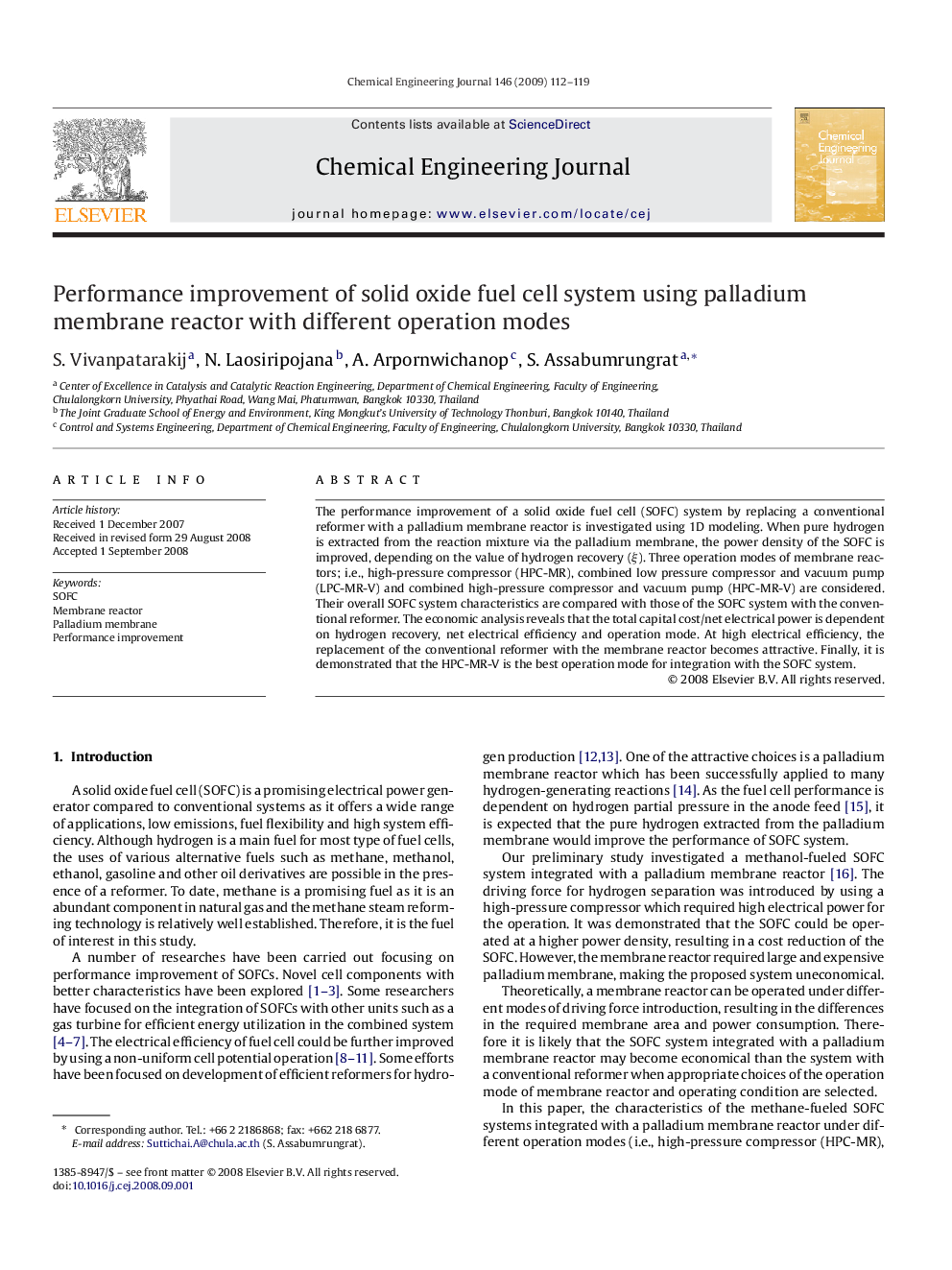| Article ID | Journal | Published Year | Pages | File Type |
|---|---|---|---|---|
| 152648 | Chemical Engineering Journal | 2009 | 8 Pages |
The performance improvement of a solid oxide fuel cell (SOFC) system by replacing a conventional reformer with a palladium membrane reactor is investigated using 1D modeling. When pure hydrogen is extracted from the reaction mixture via the palladium membrane, the power density of the SOFC is improved, depending on the value of hydrogen recovery (ξ). Three operation modes of membrane reactors; i.e., high-pressure compressor (HPC-MR), combined low pressure compressor and vacuum pump (LPC-MR-V) and combined high-pressure compressor and vacuum pump (HPC-MR-V) are considered. Their overall SOFC system characteristics are compared with those of the SOFC system with the conventional reformer. The economic analysis reveals that the total capital cost/net electrical power is dependent on hydrogen recovery, net electrical efficiency and operation mode. At high electrical efficiency, the replacement of the conventional reformer with the membrane reactor becomes attractive. Finally, it is demonstrated that the HPC-MR-V is the best operation mode for integration with the SOFC system.
